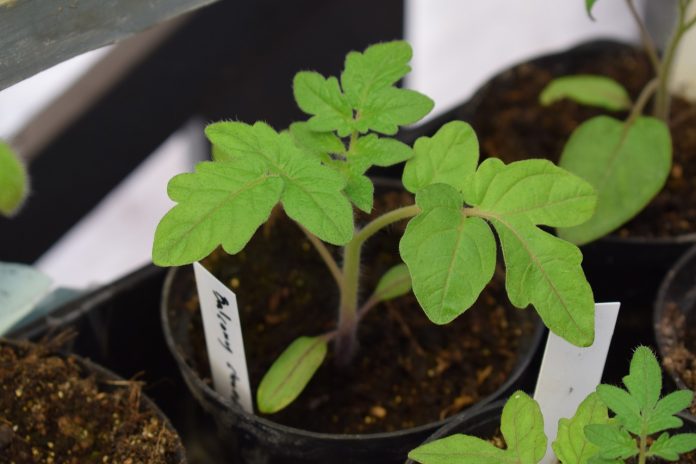It’s just past Mother’s Day, spring has just begun and somehow, I’m about 2 months behind.
It was too wet to mow; in fact, we got so much rain that our septic needed emergency service while the leech field took a few days off.
The plants indoors were doing amazing, in fact, they were growing a little too well and too fast. Except for a few.
That’s when I noticed a few tiny green dots. Honestly, it looked like my plants had contracted some sort of disease. But I found that they were easily removed, and I carefully and tediously removed every little green spot that I found.
That’s when the trouble really began because, unfortunately, that’s when I realized that those tiny green spots were moving.
Quickly, I began smashing them. That meant I was crushing these things with a lot more force than needed on my concrete basement floor. What were they? Aphids, I found out. They were eating away at my beautiful tomatoes and peppers.
Learning to grow tomatoes in the garden and on the homestead isn’t about doing one thing right. It’s more like a boxing match, and there are many opponents and more than one round to fight. This was new territory for me, but like most things, careful attention and a plan would prevail.
I removed all the aphids by hand. I then removed the plants that were too far gone, and I set aside a few for an experiment.
I’m not sure where they came from, but we did use a new seed germination mix that I really didn’t like. Realizing I wouldn’t be able to track down the source, it was time to treat.
I keep permethrin around and use it delicately in these scenarios, mostly to protect the indoor growing area. Next, I used a milk and water mixture, about half and half applied to the leaves. It’s not as aggressive as some solutions, but it does work. It requires reapplication every few days. I have overdone it a few times, spraying more than needed.
Although the milk is great for the plants, too much is detrimental. Like anything, including water, there is a balance. You can over water a plant just as easily as you can kill it by underwatering.
I continued to inspect the plants and remove any aphids that I saw in addition to spraying the milk mixture occasionally.
I lost a few good plants by the time I was able to bring them outside to harden off, but the few that I set aside proved that I was able to rescue plants that would normally turn into compost.
Now that my tomatoes are hardened off, and the warm temperature should be here to stay, I vowed I would not transplant too early.
Last year, we had a late frost near Memorial Day. Refusing to make that mistake again, I decided I would be more conservative and wait a few more weeks.
Unfortunately, the excitement of getting everything in the ground prevailed again this year. I’m not the most patient person in the world, perhaps that’s why they named a flower after me — impatiens.













